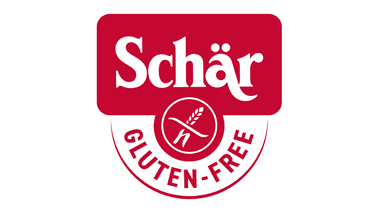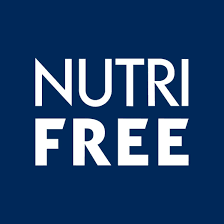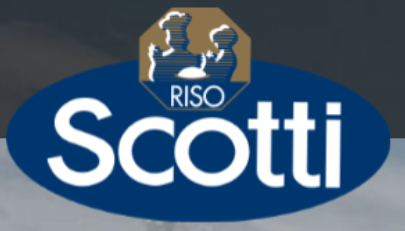Sintesi
The global gluten-free market has demonstrated significant growth since 2020, driven by growing awareness of celiac disease and gluten sensitivities, alongside broader consumer interest in health and wellness. The size of the gluten-free market stood at $9.85 billion in 2022 and is expected to soar to $15.76 billion by 2028, with a compound annual growth rate (CAGR) of 8.15%. Europe, in particular, is experiencing substantial growth, with its gluten-free market set to rise from $3.62 billion in 2024 to $6.52 billion in 2030, representing a compound annual growth rate (CAGR) of 10.33%.
Expanding horizons: the upward trend in gluten-free consumption in Italy
In Italy, the consumer trend towards gluten-free products is evident, and the market is taking on more definite contours. The Italian Celiac Disease Association (AIC) has reported a market for gluten-free products valued at around 400 million euros, testifying to the considerable attention this segment is attracting. Consumer choices are moving towards a healthier, more specialized diet, with an emphasis on products that meet dietary restrictions such as gluten intolerance. The expansion of product ranges, including bread, pasta and snacks, is one of the main drivers behind the rise in demand for gluten-free products. Notably, major retailers such as Despar, Esselunga and Carrefour have invested in developing their own brands dedicated to this segment, including the introduction of organic gluten-free options. Healthier dietary trends and the growing number of celiac disease diagnoses, estimated at over 240,000 people and set to rise, are fuelling the expansion of this market. The evolution of distribution channels for gluten-free products is a clear indication of market growth. Supermarkets and hypermarkets now offer special departments for gluten-free products, specialist stores offer extensive product ranges, and e-commerce platforms provide access to gluten-free products from all over the world. Nevertheless, the gluten-free market comes with a substantial price premium. Compared to their gluten-containing equivalents, gluten-free products can cost up to several times more, with increases of up to 450%. While the impact of this extra cost is somewhat mitigated by regional premiums for celiac patients, the high cost represents a financial challenge for those following a gluten-free diet out of necessity.
Pioneers in the gluten-free arena: key game-changing companies
The gluten-free market has undergone a remarkable transformation, driven by several key players who have responded to the diverse needs of consumers with celiac disease and gluten sensitivity. Here's a look at some of the major companies that have made significant strides in this booming segment.
- The Barilla Group: A giant of the pasta world, Barilla has ventured into the gluten-free market with a range of pasta products adapted to people who avoid gluten. With the introduction of gluten-free spaghetti and fusilli, among other forms, Barilla has successfully adapted its Italian culinary heritage to meet the needs of gluten-sensitive consumers without compromising on taste and quality.
- Galbusera: A well-established name in the cookie segment, Galbusera has embraced the gluten-free trend, producing cookies and other snacks for health-conscious customers and those with dietary restrictions. Its range of gluten-free cookies ensures that even those on special diets can indulge in the pleasure of a sweet, crunchy treat.
- Mulino Bianco: Owned by Barilla, Mulino Bianco is another familiar name that has responded to market demands by offering gluten-free versions of well-loved products. From crackers to bread, the brand maintains its reputation for flavor and satisfaction in the gluten-free category, bringing smiles to those who once had to forgo these staples.
- Buitoni: Frozen pizzas and pie doughs can be particularly difficult to recreate gluten-free, but Buitoni has taken on the task. By offering gluten-free alternatives to the most popular frozen pizzas and delicate puff pastries, the company ensures that the pleasures of Italian cuisine remain accessible.
- Peroni: Alcoholic beverages, especially beer, are not spared the demand for gluten-free options. Peroni, one of Italy's best-known beer brands, has developed a gluten-free beer that allows gluten-sensitive people to enjoy the social and taste experience of a cold beverage.
- Algida: Algida's Cornetto, a classic ice cream treat, hasn't been left out of the gluten-free revolution. Algida has introduced gluten-free versions of its ice creams, bringing summer delights within reach of all dessert lovers.
per comprendere questo mercato
Dettaglio del contenuto
 Informazioni
Informazioni
- Pagine : 30 pags
- Formato : Versione PDF e digitale
- Ultimo aggiornamento : 14/02/2024
 Riepilogo ed estratti
Riepilogo ed estratti
1 Market summary
1.1 Definition and presentation
In today's wellness and health food environment, the market for gluten-free products stands out as a rapidly expanding segment, witnessing a growing awareness and need among consumers. Celiac disease, along with other gluten sensitivities, has catalyzed a global focus on safe and affordable food alternatives, setting the stage for a significant transformation in the food consumption landscape.
The global gluten-free market projection shows an impressive upward trajectory, with estimates projecting a jump from $9.85 billion in 2022 to $15.76 billion by 2028. This expansion, quantified at a compound annual growth rate(CAGR) of8.15 percent, reflects not only a shift in consumer preferences but also an improvement in the supply of innovative, high-quality products.Europe emerges as an epicenter of this growth, with forecasts showing an increase in the value of the gluten-free market from $3.62 billion in 2024 to $6.52 billion by 2030, showing a CAGR of 10.33 percent. This shows a particularly marked acceleration in the European context, underscoring the importance of market strategies adapted to the peculiarities and needs of European consumers.
In Italy, the phenomenon takes on even more defined contours, with the Italian Celiac Association (AIC) reporting a market for gluten-free products valued at around 400 million euros.
1.2 Global market analysis
The global market for gluten-free products is experiencing significant growth, driven by increased awareness of celiac disease and other gluten sensitivities, , with projections indicating a market size of $**.** billion by ****, registering a significant compound annual growth rate(***) of*.** percent from $*.** billion in ****. This trend reflects a growing demand for healthy and ...
1.3 The Italian market
Considering the enterprises under Ateco Code **.**, related to "Production of homogenized preparations and dietetic foods, " between **** and ****, the total turnover of the industry appears to be growing. During the period analyzed, the total turnover of companies increased from *.** billion euros to *.** billion euros, marking a growth of **.* percent. The trend is ...
1.4 The consequences of the Russian-Ukrainian conflict
The outbreak of the Russian-Ukrainian conflict in February **** led to a general increase in the consumer price index. The agribusiness sector appears to be one of the most affected by the consequences of the conflict. Considering the consumer price index for food products, and assuming a similar trend for health foods, ...
2 Demand analysis
2.1 Consumer profile
There are more than *** thousand celiacs in Italy, and the trend is expected to be upward. New diagnoses in the last three years averaged * thousand per year, with a clear prevalence of the female sex(***). In ****, there were ***,** people in Italy diagnosed with celiac disease. Considering that the estimated prevalence of ...
2.2 Demand drivers
The gluten-free market, which in the past has been considered a niche market, appears to be growing and may become a mass market. This trend is supported by several drivers, the most influential of which are:
Increase in the range of products on the market
The number and type of products ...
2.3 New demand trends
Food personalization technology, which leverages algorithms and artificial intelligence, represents a significant advancement in the production of diet foods for athletes. This technology relies on detailed analysis of consumers' eating habits, lifestyle and health status to create a personalized diet plan. Key benefits include:
Data-driven personalization: using specific data collected from ...
3 Market structure
3.1 Market structure and dynamics
in order to analyze the structure of the gluten-free food market, enterprises under Ateco Code **.** "Production of homogenized preparations and dietetic foods" are considered.
Between **** and ****, the total number of enterprises devoted to the production of homogenized preparations and dietetic foods appears to be growing. During the period, the number of ...
3.2 Value Chain
The value chain in the gluten-free market has seen significant growth in recent years, in part due to an increase in the diagnosis of celiac disease and increased awareness of gluten sensitivities, but also due to a general trend toward food choices perceived as healthier or better suited to certain ...
3.3 Distribution channels
Distribution channels for selling gluten-free foods have become increasingly varied and accessible, reflecting the growing demand for products specifically for gluten-free diets. These channels have evolved to meet the needs of a wide range of consumers, from those with celiac disease to those who choose a gluten-free diet for health or ...
3.4 Main actors
4 Supply analysis
4.1 Type of products
While the family of gluten-free products covers a variety of applications ranging from cosmetics to beer, foods remain the most important products in the gluten-free industry. Thus, within the food industry, the most common products include the following categories:
Flour (***) Bread, pastries and cakes Dry pasta Pizza dough, puff pastry, shortcrust ...
4.2 A significant price premium for gluten-free products
In Italy, gluten-free products have a significantly higher cost than traditional foods, with an increase of up to ***%. This situation has a greater impact on those who follow a gluten-free diet out of medical necessity, such as those with celiac disease, who represent about * percent of the Italian population. However, despite ...
4.3 Gluten-free beers
Gluten-free beer production in Italy meets the needs of those with celiac disease by offering tasty alternatives to traditional beer. There are two main production methods: one uses naturally gluten-free raw materials, such as rice, corn, quinoa, amaranth, and sorghum; the other involves the use of barley malt with a subsequent ...
5 Rules and regulations
5.1 Rules and regulations
The Regulation (***) ***/**** establishes clear requirements for the provision of information to consumers about gluten-free or low-gluten foods. This regulation was adopted to ensure that consumers, particularly those with celiac disease or gluten sensitivity, have the information they need to make safe and informed food choices. The regulation specifies the conditions under ...
5.2 Celiac disease bonus
In Italy, the celiac disease bonus represents significant support for people with the condition, enabling them to cover part of the costs associated with the purchase of gluten-free products. The bonus can be up to *,*** euros per year, varying according to the age and sex of the beneficiary, reflecting different caloric ...
6 Positioning of actors
6.1 Segmentation
- Barilla
- Dr. Schär
- Nutrifree
- Galbusera
- Riso Scotti
 Grafica
Grafica
- Valore del mercato europeo degli alimenti gluten-free
- Mercato globale dei prodotti gluten-free
- Fatturato totale imprese sotto il Codice Ateco 10.86 "Produzione di preparati omogeneizzati e di alimenti dietetici"
- Produzione di alimenti dietetici, ripartizione per tipologia di prodotto
- Alimenti per la nutrizione specializzata, ripartizione per tipologia di prodotto
Tutti i nostri studi sono disponibili online e in PDF
Ti invitiamo a consultare un esempio del nostro lavoro di studio su altri mercato!
ultime novità
Aziende citate in questo studio
Questo studio contiene un panorama completo di società di mercato con le ultime cifre e le notizie di ogni azienda :
 Perché Scegliere Questo Studio :
Perché Scegliere Questo Studio :
Accedi a più di 35 ore di lavoro
I nostri studi sono il risultato di oltre 35 ore di ricerca e analisi. L'uso dei nostri studi ti consente di dedicare più tempo e aggiungere valore ai tuoi progetti.
Approfitta di 6 anni di esperienza e oltre 1.500 studi settoriali già prodotti
La nostra competenza ci consente di produrre studi completi in tutti i settori, inclusi i mercati di nicchia o emergenti.
Il nostro know-how e la nostra metodologia ci consentono di produrre studi con un valore unico di denaro
Accedi a diverse migliaia di articoli e dati a pagamento
BusinessCoot ha accesso all'intera stampa economica a pagamento e ai database esclusivi per svolgere studi di mercato (+ 30.000 articoli privati e fonti).
Al fine di arricchire i nostri studi, i nostri analisti utilizzano anche indicatori Web (semrush, tendenze, ecc.) Per identificare le tendenze in un mercato e strategie aziendali. (Consulta le nostre fonti a pagamento)
Supporto garantito dopo l'acquisto
Una squadra dedicata al servizio post-vendita, per garantirti un alto livello di soddisfazione. +39 380 247 7810
Un formato digitale progettato per i nostri utenti
Accedi a un PDF ma anche una versione digitale per i nostri clienti. Questa versione consente di accedere a fonti, dati in formato Excel e grafica. Il contenuto dello studio può quindi essere facilmente recuperato e adattato per i tuoi supporti.
 Le nostre offerte :
Le nostre offerte :
the gluten-free food market | Italy
- Quali sono i dati relativi alle dimensioni e alla crescita del mercato?
- Cosa sta influenzando l'andamento e l'evoluzione del mercato?
- Qual'è il posizionamento degli attori di mercato?
- Segmentazione e profilo delle aziende operanti nel mercato
- Dati e numeri da una molteplicità di fonti
Pacchetto di 5 studi (-15%) IT Italy
- 5 rapporti a 75,6 € IVA esclusa per studio da scegliere dal nostro catalogo italiano per 12 mesi
- Risparmiare il 15% sugli studi aggiuntivi acquistati
- Scegliere il rimborso del credito non utilizzato al termine dei 12 mesi (durata del pacchetto).
Consulta i termini e le condizioni del pack e del rimborso del credito non utilizzato.
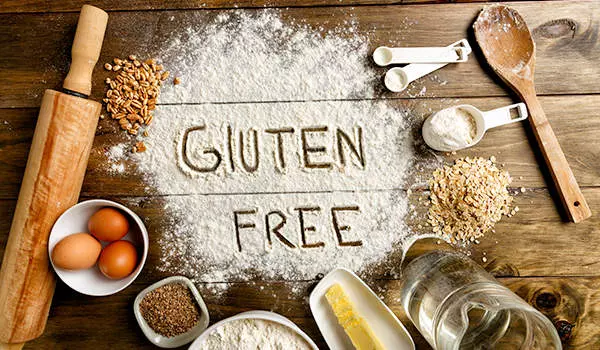




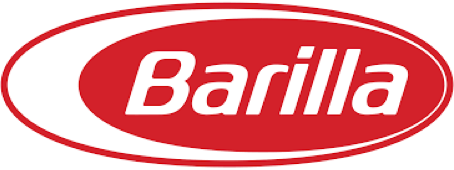 Barilla perde il secondo round della guerra dei biscotti - 02/04/2024
Barilla perde il secondo round della guerra dei biscotti - 02/04/2024
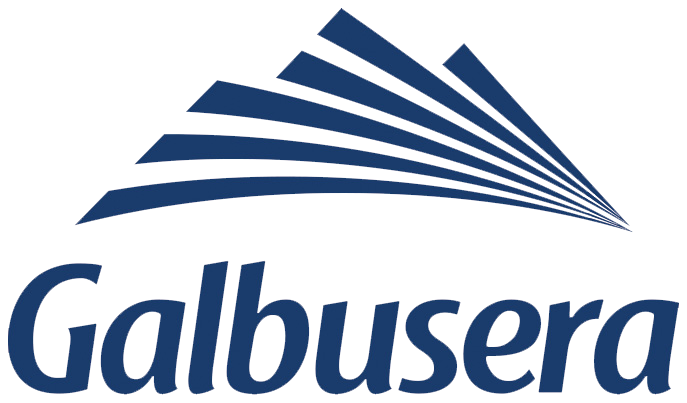 GALBUSERA RACCONTA I VALORI DEL BRAND CON UNA NUOVA CAMPAGNA PUBBLICITARIA AFFIDATA A VML - 06/02/2024
GALBUSERA RACCONTA I VALORI DEL BRAND CON UNA NUOVA CAMPAGNA PUBBLICITARIA AFFIDATA A VML - 06/02/2024
